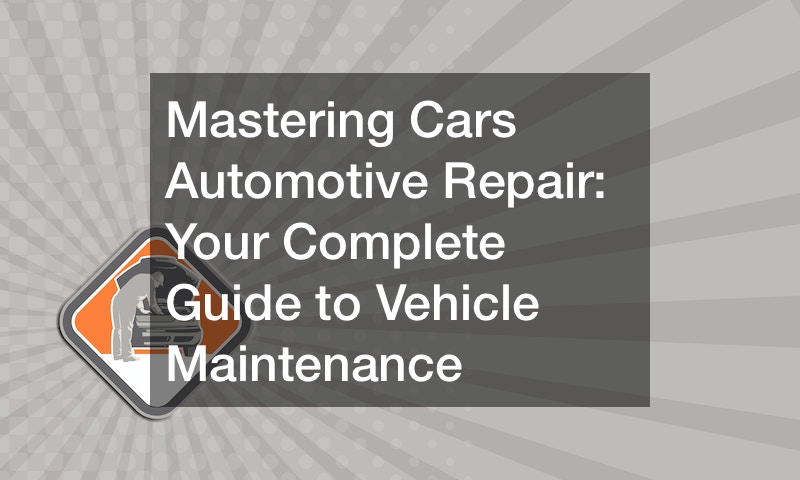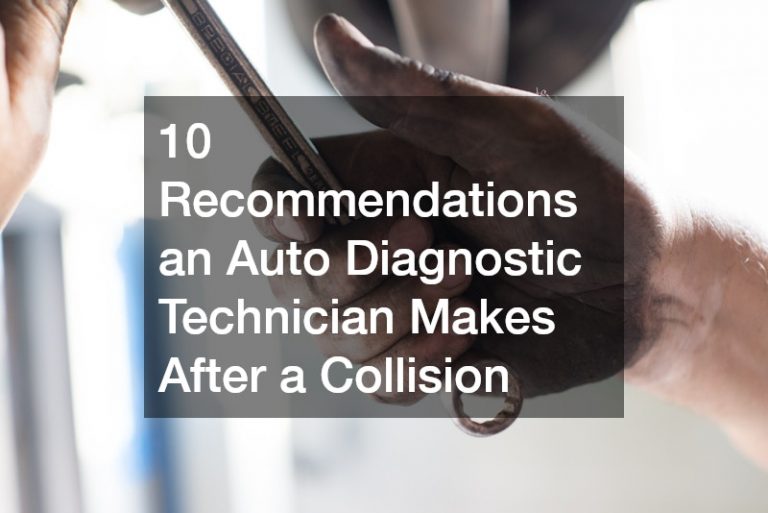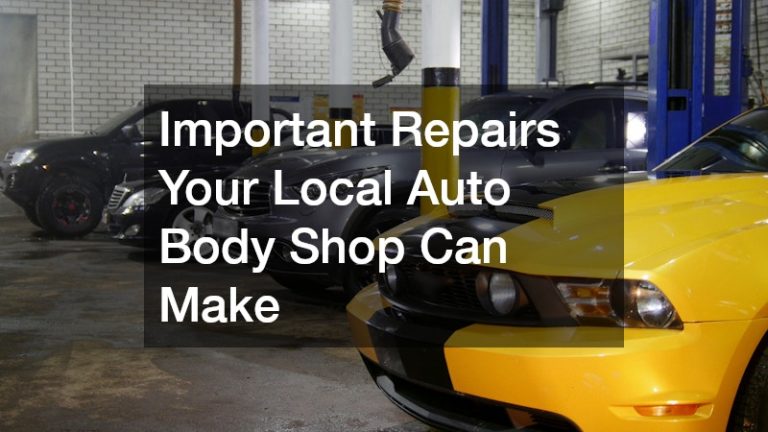

Cars need regular repairs and maintenance to stay in top working condition. However, it’s more complicated than that. There’s much more involved. Here’s your complete guide to vehicle maintenance.
1. Auto Repair Technicians: Masters of Vehicle Restoration
The intricacy of the different systems inside your car necessitates specialized knowledge to inspect, diagnose, and repair. When your car develops issues, seeking the services of a professional and seasoned mechanic is your best bet. Sure, you might be able to get auto repairs done by a friend or relative. However, you should ask yourself, are they experts, or do they only work as mechanics on the side? They’re not licensed or certified, don’t carry insurance, and likely can’t back up their work.
Their intentions may be pure. However, if they’re not professional auto repair technicians, do you genuinely think your car will be safe in their hands, or are you just hoping something will come out of their guesswork? There are several great benefits to letting an expert take care of your car’s repair needs.
Licensed and certified mechanics have the experience and the skills to address any issues that you may be experiencing with your car. They can also spot issues in their early stages and do what’s necessary to prevent them from worsening. Their on-the-job experience allows them to better understand how different issues progress and which solutions work best for them. Auto repair technicians aim to ensure each vehicle they work on won’t need premature repairs or part replacements in the future.
2. Streamlining Efficiency: CRM for Auto Repair Shops

The automotive sector is constantly changing, and so are customers’ expectations. Auto repair shops today actively search for cutting-edge, technologically advanced tools to draw in, nurture, and generate new leads. If you own such a business, you know how hard obtaining and managing customer leads can be. This is the precise reason CRM for auto repair shops was developed. It makes lead management effortless so you can focus on the most important task: fixing cars.
CRM, ‘Customer Relationship Management,’ is an abbreviation for a digital platform that helps companies manage their interactions with customers and prospects. It’s proven helpful in the auto industry, helping to streamline, organize, and automate certain processes. Auto shops use CRM to get detailed insight into customer behavior to better understand their customer’s needs and manage their expectations.
CRM software displays actionable data that a business can convert into comprehensive insights. This insight can help improve sales and contact management, facilitate better communication between your staff, build stronger relationships with clients, and give you the information you need to offer a personalized experience. Ultimately, they boost productivity, which translates to higher profitability, and build customer loyalty.
3. Car Accident Lawyer: Legal Guidance After Vehicle Mishaps
According to Driver Knowledge, roughly six million auto accidents occur in the United States annually. Within that number, roughly 90 people die every day. An additional three million individuals only suffer injuries. That’s not all. Nearly two million people suffer permanent injuries after getting into a car crash.
If you ever find yourself in an auto accident, among the first things you should do is hire a car accident lawyer. Doing this will be beneficial in several ways. You’ll need proof to get the compensation you need to cover medical costs and other relevant expenses.
More precisely, you’ll need concrete evidence that clearly shows the other driver was at fault for the crash and that you suffered financial loss, mental distress, and physical injuries as a result of it. This is where an auto accident attorney comes in. They’ll work with investigators to obtain pertinent police records, eyewitness testimonies, and footage of the collision and even perform a vehicle damage analysis with the help of auto professionals. After gathering the documents and statements that’ll help ensure the at-fault driver is liable for the accident, they’ll compile them to create an insurance claim.
4. Lithium Battery Bucket: Advancements in Automotive Technology
A lithium battery bucket or box comprises several lithium battery cells. These units can supply the electrical energy needed for EVs. They can either be connected in parallel or in series. They’re one of the main parts of an electric vehicle (EV), which stores and releases electric energy.
This bucket typically features two main parts: a shell and a lithium battery. It can be mounted inside the body of the vehicle or under it. To guarantee the safety of EVs when they are being used, the lithium battery box shell is often constructed from high-strength materials with waterproofing, high pressure, and shock resistance. Installing the lithium battery box is as easy as fastening it to the frame.
The design of the lithium battery bucket is vital because of the unique properties of lithium batteries. Priority is given to the lithium battery box’s ability to dissipate heat to keep the battery from overheating, resulting in safety hazards. The lithium battery box must also be the appropriate weight and size to accommodate various cars without affecting comfort or performance.
5. Mastering Car Painting: Techniques and Innovations
Car paint technology is one area that has witnessed considerable developments. The paint on your automobile does more than make it aesthetically pleasing. It serves as a protective barrier against the effects of continuous exposure to the elements, improving your vehicle’s lifespan and overall value. Innovative research and development initiatives have given rise to state-of-the-art car painting technologies that provide remarkable advantages like visual appeal, longevity, and sustainability.
Significant advancements in automotive paint technology have been made possible by nanotechnology. Introducing nanoparticles into paint formulations has remarkably improved aesthetics and overall performance. Thanks to their increased surface area, they facilitate better UV protection, scratch resistance, and adhesion.
Besides that, they can self-align. This feature helps to produce a smoother, more even paint surface, which improves fuel efficiency by reducing drag. Additionally, nanotechnology has facilitated the development of ‘smart paints,’ which can self-heal small dings and defects and preserve the car’s flawless image over time.
Digital printing technology has also impacted auto painting technology. It allows intricate and elaborate designs, graphics, or patterns to be applied directly to the vehicle’s surface. This development has increased the market for high-end, limited-edition luxury cars and created new avenues for artistic expression. Digital printing has also increased branding opportunities.
6. Car Repairs 101: Essential Maintenance Tips
According to Kelley Blue Book (KBB), routine vehicle maintenance can help you avoid costly repairs and preserve your car’s value when the time comes to sell or trade it in. While certain standard auto maintenance tasks can be completed at home, others require the attention of an experienced mechanic or technician. If your car’s check engine light appears, for example, a mechanic can use a scan tool to use the car’s onboard diagnostics (OBD-II) to diagnose the issue. This is something you likely don’t have at home.
A professional can inspect and replace other essential parts, such as alternators and wheel bearings. Keeping up with routine maintenance will ensure your car repairs are addressed promptly before they become more serious. Ideally, taking your automobile in for a checkup at least once a year is best.
However, the owner’s manual is the best source for determining your vehicle’s recommended maintenance schedule. It’s important to note that some tasks may necessitate more frequent checkups. Others may only need inspection every few years.
If there’s one thing you should never do, it is skipping oil changes. Doing so can result in costly repairs since oil affects almost everything your car does. You can change your car’s oil every 5,000 miles or as per the manufacturer’s recommendations.
7. Mechanic Shops: Your Go-To for Automotive Expertise
It’s a popular misconception that local vehicle dealerships are the only places to find top-notch auto care. Big-name auto dealerships surely offer reputable repair services but at astronomically high prices. However, plenty of local mechanic shops provide all the services you may need at reasonable costs. They can perform work that is on par with or even better than that of auto dealerships. Local auto technicians are unquestionably the better choice than big-box businesses because of their years of experience and commitment to their craft.
There’s also the fact that auto shops are constantly competing with one another. They focus on providing exceptional client and technical services to attract new clients and retain their current clientele. They constantly try to impress their clients, so take advantage of these efforts. However, before selecting an auto repair company, research extensively to ensure you’re paying for top-notch services.
Local mechanic shops also typically have more convenient locations than dealerships. Even though dealerships are usually found in populated areas, plenty of respectable auto shops spread out over the town. If you’re a car enthusiast with a performance-focused automobile and you want to make aftermarket upgrades, you can always trust your mechanic to complete the task. Unlike dealerships, which hardly ever provide this option, your mechanic will customize your car to meet your unique requirements. They will even install the components you buy independently.
8. Finding the best Local Auto Repair Shop Near You

As you look for a local auto repair shop where you can take your car for repairs and maintenance, note that only some of the ones you come across are worth your hard-earned money. Some care little about the quality of services they provide. They only want to make a buck off you.
That’s why you want to be intentional when searching for a mechanic. Look for a shop that specializes in your brand and model of car. Such shops will likely have the skills, training, and equipment to repair your vehicle.
Your family and friends can also be a great resource in your search, especially those with the same vehicle. You also want to take advantage of the internet. You can find many reviews and testimonials of past customers, which will give you insight into the quality of their services.
Always check for certification. Ensure any mechanic you want to hire has a National Institute for Automotive Service Excellence certification. Checking with the Better Business Bureau is also a good idea. Here, you’ll find complaints against any mechanic you’re considering, if there are any.
9. Auto Body Shops: Reviving Vehicles to Pristine Condition
Auto body repair is a process that’s essential to keeping your car looking good and its systems healthy. Evaluating the damage is the first step. A qualified mechanic will thoroughly inspect your car and note any cracks, scratches, dents, or other damage needing professional attention.
Once they complete the assessment, they’ll plan the necessary repairs. This mainly involves establishing the best solution to restore your car to pristine condition. While at it, they’ll give you a detailed estimate for the entire job.
All auto body shops prep a vehicle before they begin the repairs. This could entail removing components or parts that need replacement or are in the way, including doors, fenders, or bumpers. They’ll also do a thorough cleaning of the damaged area to ensure the effectiveness of their work.
The repairs will depend on the extent and type of damage and the chosen technique. Once they finish, they’ll conduct a final inspection to ensure they addressed everything. However, you should also inspect the car just to be sure.
10. Optimizing Operations: Car Shop Management System

Many moving parts are involved in running an auto shop, from scheduling jobs, conducting inspections, creating estimates, and updating customers on the progress to invoicing and billing. Significant advancements have been made in automotive shop management systems from the days of disjointed communication channels and manual record-keeping.
Modern car shop management system solutions have completely transformed how auto repair shops are run. They offer all-inclusive solutions that help to facilitate better communication with clients, manage scheduling, track inventory, and streamline workflows. Within a unified platform, these systems incorporate various components, including recalls, quick specs, vehicle history tracking, parts ordering, repair order management, customer databases, and more. Many systems nowadays are browser-based and cloud-based, eliminating many of the possible difficulties associated with operating a locally maintained client-server system.
The capability of modern shop management systems to record and distribute visual repair documentation during an inspection or diagnostic procedure is one of its notable benefits. Technicians may help customers better understand the problems with their vehicles by including pictures and videos with repair orders. This way, customers can see the problems and their solutions.
Automotive repair and maintenance is key to ensuring a car’s efficiency and longevity. There’s no way around it. You can use this read to better understand what’s usually involved.





